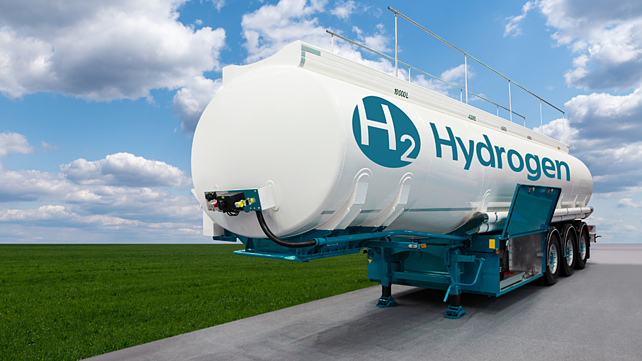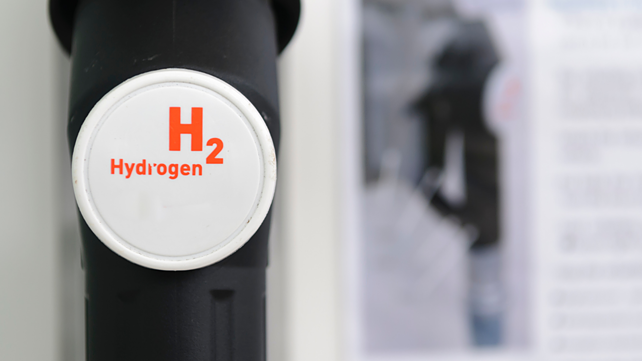
The history of hydrogen mobility rolls back to over 100 plus years. As we fast forward to the late 20th century and now the 21st century, it may be fitting to refresh some quick facts. Hydrogen (H2) is the most abundant element on earth, but it is rarely alone. It is present in almost infinite quantities, and every litre of water contains about 110 grams of H2, and is the most flexible energy carrier.
There are two primary aspects that make H2 attractive to mobility – one, hydrogen refills take less than 5 minutes like today’s refuelling, and two, it is 5X lighter than Li-Ion battery, and 2X smaller.
The excitement around this colourless and odourless light molecule is growing rapidly in the mobility environment. In aviation, companies are working on introducing eco-friendly hydrogen-fuelled models by the mid-2030s, to decarbonise the aviation industry. The railways have prototype passenger trains powered by fuel cells that produce electrical power for traction. Maritime applications have used liquid hydrogen. Shipping also provides an opportunity owing to the limited low-carbon fuel options available.
Global Experiments & Learning
A detailed scrutiny of the off-road and on-road mobility shows that OEMs have been working on H2-fuelled vehicles – both combustion engines and with fuel cells – for decades. Most of them had started in the initial years with captive H2 fuelling stations that have expanded in the public domain with Government partnerships.
Japan, California (US), and the EU have led in H2 infrastructure development. As a fuel, H2 has been deployed in personal as well as public transportation. Some of the government funded projects in countries where CNG is used as a primary fuel are in the space of Hydrogen-CNG. The EU and the US had started H2 partnership programmes with OEMs and that is when H2 impregnated from space and nuclear applications into the technology demonstrators of larger mobility ecosystems.
Some recent EU initiatives range from Zero Emission Valley in the Auvergne Rhône Alpes region to the Clean Hydrogen Partnership, which is a collaboration of players in mobility and production. This is the first step in the industrial-scale production of heavy-duty hydrogen vehicles.

The European Commission has set up a strategic forum for Important Projects of Common European Interest (IPCEI) dedicated to hydrogen, which is underway to address challenges of the mass hydrogen mobility market. The Clean Hydrogen Alliance in Europe is to support and enable energy transition. The Hydrogen Council is a coalition of CEOs from leading energy, transportation, and industrial companies, that wish to accelerate the global energy transition.
Developments In India
The Indian Government had published the generation 1.0 blueprint of the National Hydrogen Energy Roadmap in 2005. In recent times, the government has made a few new moves, including the announcement of the National Hydrogen Mission in the Union Budget 2021 for the creation of a hydrogen roadmap for the country. It has suggested a GST reduction on hydrogen-powered vehicles from 28% to 12%.
The Auto Industry Standards Committee, meanwhile, has prepared a final draft on H2 regulations. Two H2 refuelling stations exist in IOC R&D, Faridabad & National Institute of Solar Energy, Gurugram. Recently, the Ministry of Road Transport & Highways (MoRTH) notified amendments to the Central Motor Vehicles Rules, 2020 issuing standards for safety evaluation of the vehicles propelled by hydrogen fuel cells.

These initiatives will help with supply, delivery and storage of H2 fuel, and will enable development of safety systems – for shipment, storage, testing and development, and vehicle carrying capacity. The biggest challenge is in distribution & delivery of H2, and on-board storage in a vehicle as well as safety systems in parking areas. As different industry players get together their fleets, aspects of safety and infrastructure will get the appropriate attention and be ready for mass market deployment.
From a vehicle perspective, the OEMs will get creative simultaneously in packaging & managing H2 supply from under the hood to storage tanks, redesigning the electrical switches to co-exist with H2 on-board, safety systems and the hierarchical co-existence with other on-board controllers.
Fulfilling A Need
The time has now come for H2 mobility to stay; it is no more green myopia. It is the fulfilment of a zero-emission tailpipe dream that emits water only, as it moves the world economy – in the air, on road, in maritime or railways.
About the Author: Dr Arun Jaura is Managing Director of Michelin India Technical Center in Pune.